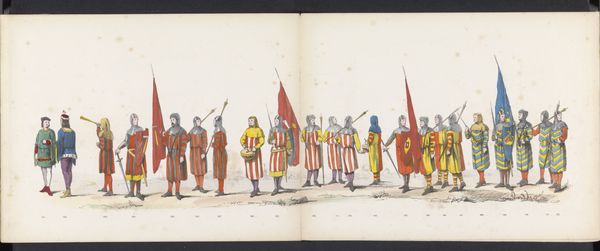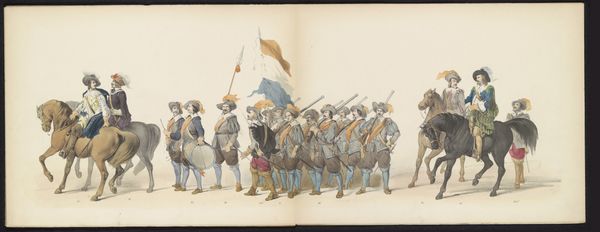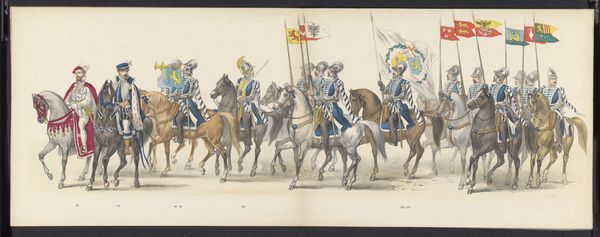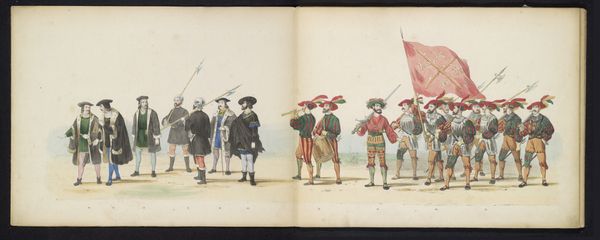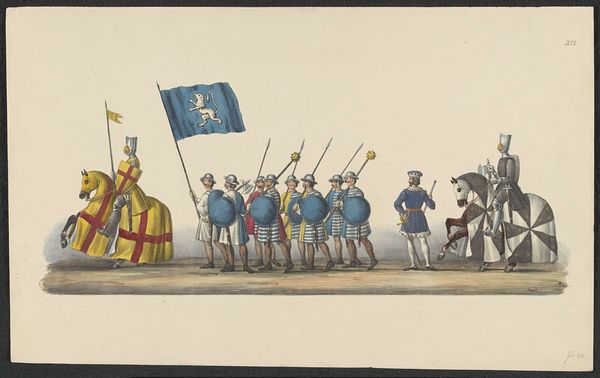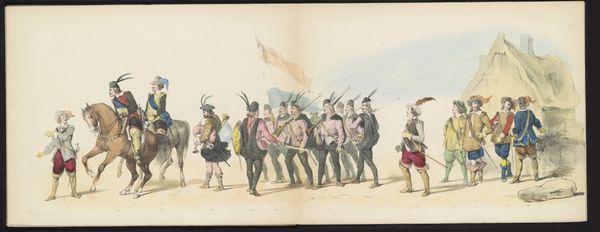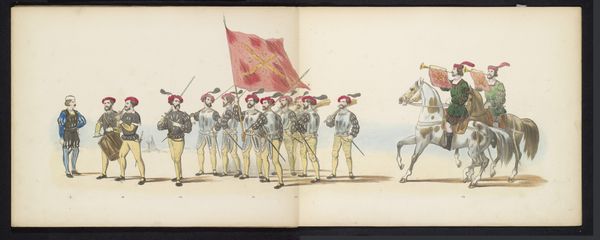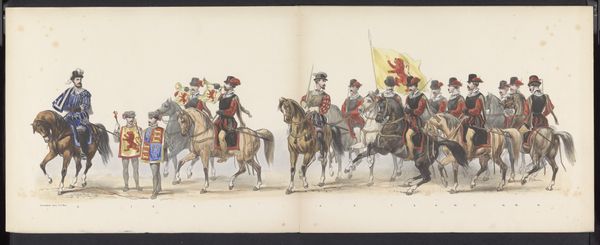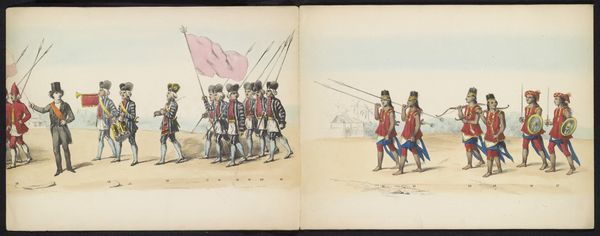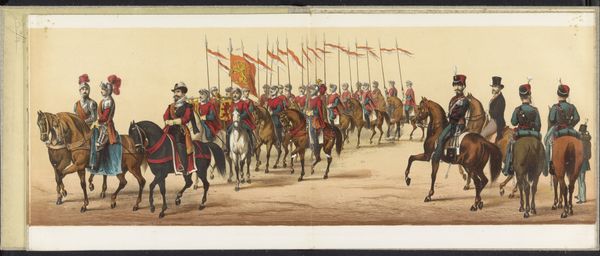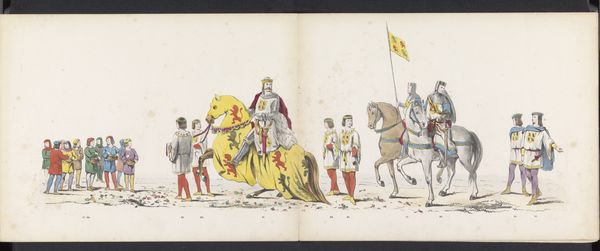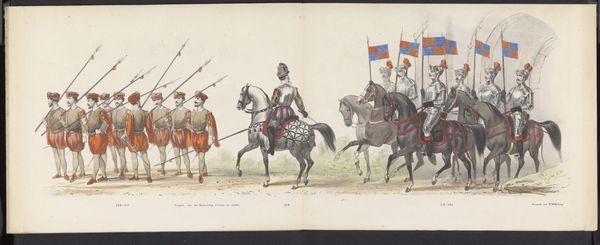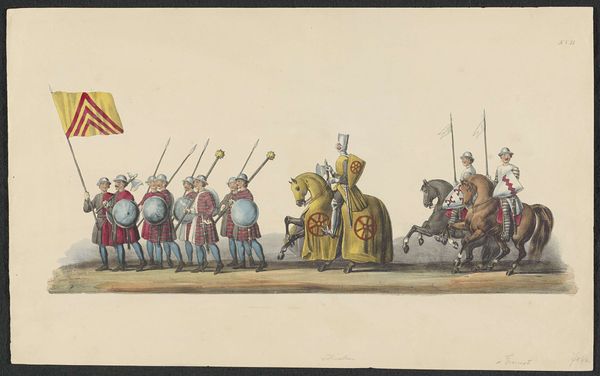
#
imaginative character sketch
#
pen sketch
#
sketch book
#
incomplete sketchy
#
personal sketchbook
#
pen-ink sketch
#
thin linework
#
sketchbook drawing
#
sketchbook art
#
fantasy sketch
Dimensions: height 275 mm, width 710 mm
Copyright: Rijks Museum: Open Domain
Curator: Look at the marvelous procession rendered in "Maskerade van de Leidse studenten, 1870 (plaat 16)" created in 1870 by Gerardus Johannes Bos. Don’t you think it's a wonderfully fanciful scene? Editor: Yes, I see the visual spectacle immediately! It feels light and playful, yet carefully considered, given the obvious detail in each figure’s garment. I wonder about the material circumstances surrounding its production, given how many figures there are on the sheet. Was this for distribution? Private use? Curator: I see your curiosity there. While little is definitively known, one can intuit the symbolism and pageantry involved in student life. These student societies would have been associated with specific symbolic colors, animals, or deities of the past and are referencing these in a tongue-in-cheek way in their performances. Note the classical or even medieval flourishes. It may seem haphazard, but it signifies a deliberate harkening back. Editor: It's an ink drawing. But even that speaks to craft; you need the right consistency in your ink to allow for controlled and rapid distribution. It certainly speaks to the time pressures placed on him: sketchbooks are like the artisan’s notebooks: evidence of study and production, a reference, something for reflection... What does this reveal of Leiden's culture then? Or the students’ expectations about the quality of materials at hand? Curator: The way I see it, it’s less about specific cultural expectations and more about conjuring a world. The students here embody a world of imagination and ideals. In this context, Leiden transcends its mundane existence. Through Bos’ pen, the march becomes timeless and resonant. The students perform history but simultaneously craft their future image. Editor: The ink and paper would have to have been accessible, mass-produced perhaps, to quickly replicate and share it… it democratizes knowledge and production but requires the students to play a particular role as producers in society. That feels revealing in itself. Curator: Interesting thoughts! Editor: Indeed! It feels as though examining the work and our points has opened many other interesting perspectives.
Comments
No comments
Be the first to comment and join the conversation on the ultimate creative platform.
